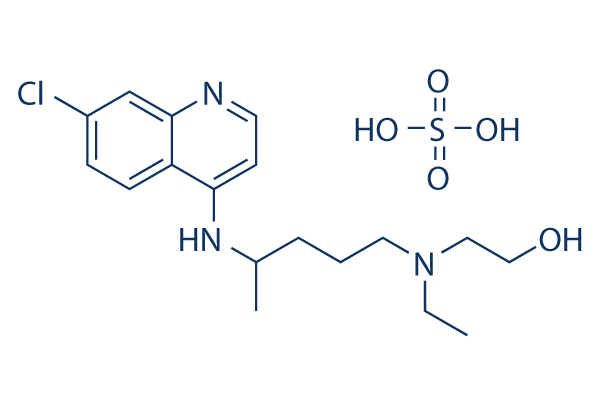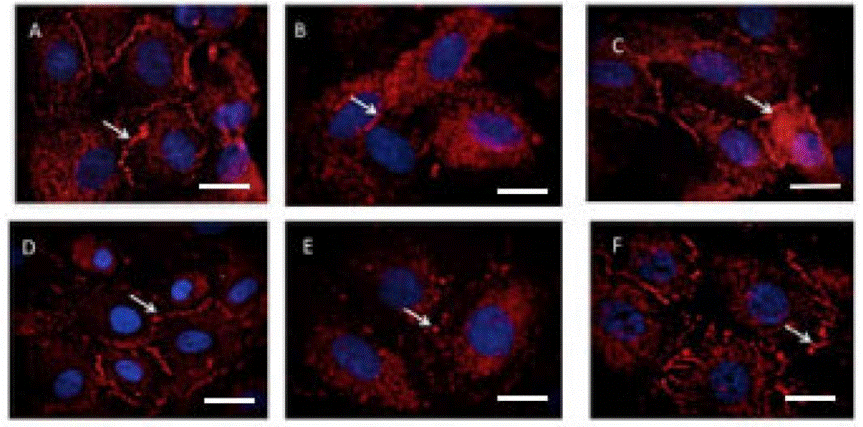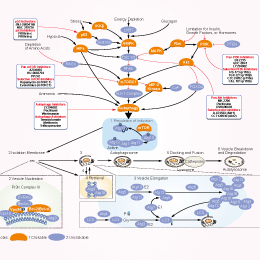
- Bioactive Compounds
- By Signaling Pathways
- PI3K/Akt/mTOR
- Epigenetics
- Methylation
- Immunology & Inflammation
- Protein Tyrosine Kinase
- Angiogenesis
- Apoptosis
- Autophagy
- ER stress & UPR
- JAK/STAT
- MAPK
- Cytoskeletal Signaling
- Cell Cycle
- TGF-beta/Smad
- DNA Damage/DNA Repair
- Compound Libraries
- Popular Compound Libraries
- Customize Library
- Clinical and FDA-approved Related
- Bioactive Compound Libraries
- Inhibitor Related
- Natural Product Related
- Metabolism Related
- Cell Death Related
- By Signaling Pathway
- By Disease
- Anti-infection and Antiviral Related
- Neuronal and Immunology Related
- Fragment and Covalent Related
- FDA-approved Drug Library
- FDA-approved & Passed Phase I Drug Library
- Preclinical/Clinical Compound Library
- Bioactive Compound Library-I
- Bioactive Compound Library-Ⅱ
- Kinase Inhibitor Library
- Express-Pick Library
- Natural Product Library
- Human Endogenous Metabolite Compound Library
- Alkaloid Compound LibraryNew
- Angiogenesis Related compound Library
- Anti-Aging Compound Library
- Anti-alzheimer Disease Compound Library
- Antibiotics compound Library
- Anti-cancer Compound Library
- Anti-cancer Compound Library-Ⅱ
- Anti-cancer Metabolism Compound Library
- Anti-Cardiovascular Disease Compound Library
- Anti-diabetic Compound Library
- Anti-infection Compound Library
- Antioxidant Compound Library
- Anti-parasitic Compound Library
- Antiviral Compound Library
- Apoptosis Compound Library
- Autophagy Compound Library
- Calcium Channel Blocker LibraryNew
- Cambridge Cancer Compound Library
- Carbohydrate Metabolism Compound LibraryNew
- Cell Cycle compound library
- CNS-Penetrant Compound Library
- Covalent Inhibitor Library
- Cytokine Inhibitor LibraryNew
- Cytoskeletal Signaling Pathway Compound Library
- DNA Damage/DNA Repair compound Library
- Drug-like Compound Library
- Endoplasmic Reticulum Stress Compound Library
- Epigenetics Compound Library
- Exosome Secretion Related Compound LibraryNew
- FDA-approved Anticancer Drug LibraryNew
- Ferroptosis Compound Library
- Flavonoid Compound Library
- Fragment Library
- Glutamine Metabolism Compound Library
- Glycolysis Compound Library
- GPCR Compound Library
- Gut Microbial Metabolite Library
- HIF-1 Signaling Pathway Compound Library
- Highly Selective Inhibitor Library
- Histone modification compound library
- HTS Library for Drug Discovery
- Human Hormone Related Compound LibraryNew
- Human Transcription Factor Compound LibraryNew
- Immunology/Inflammation Compound Library
- Inhibitor Library
- Ion Channel Ligand Library
- JAK/STAT compound library
- Lipid Metabolism Compound LibraryNew
- Macrocyclic Compound Library
- MAPK Inhibitor Library
- Medicine Food Homology Compound Library
- Metabolism Compound Library
- Methylation Compound Library
- Mouse Metabolite Compound LibraryNew
- Natural Organic Compound Library
- Neuronal Signaling Compound Library
- NF-κB Signaling Compound Library
- Nucleoside Analogue Library
- Obesity Compound Library
- Oxidative Stress Compound LibraryNew
- Plant Extract Library
- Phenotypic Screening Library
- PI3K/Akt Inhibitor Library
- Protease Inhibitor Library
- Protein-protein Interaction Inhibitor Library
- Pyroptosis Compound Library
- Small Molecule Immuno-Oncology Compound Library
- Mitochondria-Targeted Compound LibraryNew
- Stem Cell Differentiation Compound LibraryNew
- Stem Cell Signaling Compound Library
- Natural Phenol Compound LibraryNew
- Natural Terpenoid Compound LibraryNew
- TGF-beta/Smad compound library
- Traditional Chinese Medicine Library
- Tyrosine Kinase Inhibitor Library
- Ubiquitination Compound Library
-
Cherry Picking
You can personalize your library with chemicals from within Selleck's inventory. Build the right library for your research endeavors by choosing from compounds in all of our available libraries.
Please contact us at info@selleckchem.com to customize your library.
You could select:
- Antibodies
- Bioreagents
- qPCR
- 2x SYBR Green qPCR Master Mix
- 2x SYBR Green qPCR Master Mix(Low ROX)
- 2x SYBR Green qPCR Master Mix(High ROX)
- Protein Assay
- Protein A/G Magnetic Beads for IP
- Anti-Flag magnetic beads
- Anti-Flag Affinity Gel
- Anti-Myc magnetic beads
- Anti-HA magnetic beads
- Poly DYKDDDDK Tag Peptide lyophilized powder
- Protease Inhibitor Cocktail
- Protease Inhibitor Cocktail (EDTA-Free, 100X in DMSO)
- Phosphatase Inhibitor Cocktail (2 Tubes, 100X)
- Cell Biology
- Cell Counting Kit-8 (CCK-8)
- Animal Experiment
- Mouse Direct PCR Kit (For Genotyping)
- New Products
- Contact Us
research use only
Hydroxychloroquine (HCQ) Sulfate Autophagy inhibitor
Hydroxychloroquine (HCQ) Sulfate is an antimalarial agent used for the treatment of systemic lupus erythematosus, rheumatoid arthritis and other autoimmune, inflammatory and dermatologic conditions. Also acts as an inhibitor of autophagy and toll-like receptor (TLR) 7/9.

Chemical Structure
Molecular Weight: 433.95
Purity & Quality Control
Batch:
Purity:
99.86%
99.86
Related Products
| Related Products | Resveratrol Spautin-1 PIK-III DC661 Lys05 Autophinib SMER28 EAD1 Flubendazole EN6 ROC-325 NSC 185058 MPP+ iodide IITZ-01 STF-62247 QX77 CA-5f Lucanthone CA77.1 Daurisoline | Click to Expand |
|---|---|---|
| Related Compound Libraries | Kinase Inhibitor Library FDA-approved Drug Library Natural Product Library Bioactive Compound Library-I Highly Selective Inhibitor Library | Click to Expand |
Signaling Pathway
Cell Culture and Working Concentration
| Cell Lines | Assay Type | Concentration | Incubation Time | Formulation | Activity Description | PMID |
|---|---|---|---|---|---|---|
| Function assay | HEK-Blue cells | Antagonist activity at human TLR9 expressed in HEK-Blue cells assessed as reduction in CpGB-induced NF-kappaB levels after 24 hrs by spectrophotometric analysis, IC50 = 0.11 μM. | 30292896 | |||
| Antiviral assay | Vero E6 cells | 48 h | IC50 for antiviral activity against SARS-CoV-2 in the Vero E6 cell line at 48 h by immunofluorescence-based assay (detecting the viral NP protein in the nucleus of the Vero E6 cells)., IC50 = 0.67608 μM. | 32353859 | ||
| Function assay | HEK-Blue cells | Antagonist activity at human TLR7 expressed in HEK-Blue cells assessed as reduction in CL264-induced NF-kappaB levels after 24 hrs by spectrophotometric analysis, IC50 = 0.8 μM. | 30292896 | |||
| Function assay | HEK293 cells | hERG binding assays: Displacement of [3H]-Dofetilide (5 nM final) from hERG membranes obtained from HEK293 cells, Ki = 2.51189 μM. | 32353859 | |||
| Antiviral assay | Vero E6 cells | IC90 for antiviral activity against SARS-CoV-2 in the Vero E6 cell line by measuring infectious viral titer of supernatent from compound-treated Vero E6 cells by Median Tissue Culture Infectious Dose (TCID)50 by the method of Reed and Muench, IC90 = 5.78 μM. | 32353859 | |||
| Antiproliferative assay | BxPC3 cells | 72 hrs | Antiproliferative activity against human BxPC3 cells after 72 hrs by SRB method, IC50 = 33 μM. | 25699157 | ||
| qHTS assay | A673 cells | qHTS of pediatric cancer cell lines to identify multiple opportunities for drug repurposing: Primary screen for A673 cells | 29435139 | |||
| qHTS assay | BT-37 cells | qHTS of pediatric cancer cell lines to identify multiple opportunities for drug repurposing: Primary screen for BT-37 cells | 29435139 | |||
| qHTS assay | SK-N-MC cells | qHTS of pediatric cancer cell lines to identify multiple opportunities for drug repurposing: Primary screen for SK-N-MC cells | 29435139 | |||
| qHTS assay | NB-EBc1 cells | qHTS of pediatric cancer cell lines to identify multiple opportunities for drug repurposing: Primary screen for NB-EBc1 cells | 29435139 | |||
| qHTS assay | LAN-5 cells | qHTS of pediatric cancer cell lines to identify multiple opportunities for drug repurposing: Primary screen for LAN-5 cells | 29435139 | |||
| Antiproliferative assay | A549 cells | 25 ug/ml | 20 hrs | Antiproliferative activity in human A549 cells at 25 ug/ml up to 20 hrs by xCELLigence RTCA SP based cellular impedance analysis | 28570977 | |
| Antiproliferative assay | A549 cells | 25 ug/ml | 60 hrs | Antiproliferative activity in human A549 cells at 25 ug/ml after 60 hrs by xCELLigence RTCA SP based cellular impedance analysis | 28570977 | |
| Autophagy assay | NCI-H3122 cells | 25 to 50 uM | 6 hrs | Inhibition of autophagy in human NCI-H3122 cells assessed as increase in punctate LC3 expression at 25 to 50 uM after 6 hrs by fluorescence microscopic analysis | 25699157 | |
| Apoptosis assay | H460 cells | 25 to 75 uM | 24 hrs | Induction of apoptosis in human H460 cells at 25 to 75 uM after 24 hrs by annexin-V staining-based flow cytometry | 25699157 | |
| Autophagy assay | H460 cells | 24 hrs | Inhibition of autophagy in human H460 cells assessed as increase in LC3-2 level at IC50 after 24 hrs by immunoblot analysis | 25699157 | ||
| Antiviral assay | Vero E6 cells | 2 days | Antiviral efficacy against SARS-CoV-2 (strain BavPat1) in Vero E6 cells assessed by inhibition of viral RNA replication measured by RT-PCR after 2 days, EC50 = 4.17 μM. | ChEMBL | ||
| Antiviral assay | Vero E6 cells | 3 days | IC50 determination at MOI 0.004 using CellTiter- Glo (CTG) assay, performed 3 days post-infection in SARS-CoV-2 infected Vero E6 cells, IC50 = 9.21 μM. | ChEMBL | ||
| Antiviral assay | Vero E6 cells | 3 days | IC50 determination at MOI 0.01 using CellTiter- Glo (CTG) assay, performed 3 days post-infection in SARS-CoV-2 infected Vero E6 cells, IC50 = 11.17 μM. | ChEMBL | ||
| Antiviral assay | Vero E6 cells | 2 days | Antiviral efficacy against SARS-CoV-2 (strain BavPat1) in Vero E6 cells assessed by inhibition of viral RNA replication measured by RT-PCR after 2 days, EC90 = 25.49 μM. | ChEMBL | ||
| Click to View More Cell Line Experimental Data | ||||||
Mechanism of Action
| Targets |
|
|---|
In vitro |
||||
| In vitro | Hydroxychloroquine Sulfate is a potent inhibitor of autophagy. It prevents lysosomal acidification, thereby interfering with a key step in the autophagic process.HCQ treatment inhibits RCC (renal cell cancer) cell growth, promotes apoptosis, inhibits mitochondrial oxygen consumption, and increases rates of glycolysis[2]. |
|||
|---|---|---|---|---|
| Kinase Assay | In vitro kinase assays | |||
| with purified proteins, recombinant S6 protein and recombinant active P70S6K are incubated in 1x kinase buffer with various amount of HCQ or RAD001 in the presence (25 μM) or absence of ATP for 30 minutes at 30°C. Total and phosphorylated S6 at ser235/236 and ser240/244 are detected by western analysis using phosphospecific antibodies. Note that recombinant GST-tagged S6 (53 kd) is distinguished from endogenous S6 (32 kd) on the western blot. | ||||
| Cell Research | Cell lines | Human RCC cell lines | ||
| Concentrations | 75 or 100 μM | |||
| Incubation Time | 48 h | |||
| Method | All cells are cultured in RPMI with 10% FBS, 1% glutamine, and 1% Pen/Strep. cells are seeded on the appropriated plates overnight and treated with HCQ (75 or 100 μM) for 48 hours. |
|||
| Experimental Result Images | Methods | Biomarkers | Images | PMID |
| Western blot | NOX2 / β-actin p-NF-κB / β-actin NLRP3 / β-actin p62 / LC3-I / LC3-II / GAPDH |

|
32260307 | |
| IHC | HE staining of spleen tissue |

|
29456648 | |
| Immunofluorescence | ZO-1 |

|
32260307 | |
In Vivo |
||
| In vivo | The treatment of Hydroxychloroquine Sulfate reduces the infarct size in an in vivo rat model of I/R injury and the cardioprotective effect of Hydroxychloroquine is ERK1/2 dependent[3]. In addition, Hydroxychloroquine Sulfate shows an early vascular protective effect. HCQ seems to prevent the occurrence of endothelial dysfunction(ED) in treated animals[4]. |
|
|---|---|---|
| NCT Number | Recruitment | Conditions | Sponsor/Collaborators | Start Date | Phases |
|---|---|---|---|---|---|
| NCT06408298 | Not yet recruiting | Resectable Localized Prostate Cancer |
Lionel.D.Lewis MD|Dartmouth Cancer Center|Dartmouth-Hitchcock Medical Center |
June 2024 | Early Phase 1 |
| NCT05841758 | Not yet recruiting | Sarcoidosis Pulmonary |
Hospices Civils de Lyon |
April 1 2024 | Phase 4 |
| NCT04731051 | Withdrawn | 2019 Novel Coronavirus |
King Hussein Cancer Center|Amman Pharmaceutical Industries (API)|Sana Pharmaceutical Industry|ACDIMA Biocenter |
October 2022 | Phase 1|Phase 2 |
| NCT05733897 | Recruiting | Nonalcoholic Steatohepatitis |
National Taiwan University Hospital|National Taiwan University |
June 10 2022 | -- |
| NCT05237843 | Unknown status | Recurrent Pregnancy Loss |
Ain Shams University |
March 1 2022 | Phase 1 |
References |
|
Chemical Information
| Molecular Weight | 433.95 | Formula | C18H28ClN3O5S |
| CAS No. | 747-36-4 | SDF | Download SDF |
| Synonyms | NSC 4375 | ||
| Smiles | CCN(CCCC(C)NC1=C2C=CC(=CC2=NC=C1)Cl)CCO.OS(=O)(=O)O | ||
Storage and Stability
| Storage (From the date of receipt) | |||
|
In vitro |
Water : 87 mg/mL DMSO : Insoluble ( Moisture-absorbing DMSO reduces solubility. Please use fresh DMSO.) Ethanol : Insoluble |
Molecular Weight Calculator |
|
In vivo Add solvents to the product individually and in order. |
In vivo Formulation Calculator |
|||||
Preparing Stock Solutions
Molarity Calculator
In vivo Formulation Calculator (Clear solution)
Step 1: Enter information below (Recommended: An additional animal making an allowance for loss during the experiment)
mg/kg
g
μL
Step 2: Enter the in vivo formulation (This is only the calculator, not formulation. Please contact us first if there is no in vivo formulation at the solubility Section.)
% DMSO
%
% Tween 80
% ddH2O
%DMSO
%
Calculation results:
Working concentration: mg/ml;
Method for preparing DMSO master liquid: mg drug pre-dissolved in μL DMSO ( Master liquid concentration mg/mL, Please contact us first if the concentration exceeds the DMSO solubility of the batch of drug. )
Method for preparing in vivo formulation: Take μL DMSO master liquid, next addμL PEG300, mix and clarify, next addμL Tween 80, mix and clarify, next add μL ddH2O, mix and clarify.
Method for preparing in vivo formulation: Take μL DMSO master liquid, next add μL Corn oil, mix and clarify.
Note: 1. Please make sure the liquid is clear before adding the next solvent.
2. Be sure to add the solvent(s) in order. You must ensure that the solution obtained, in the previous addition, is a clear solution before proceeding to add the next solvent. Physical methods such
as vortex, ultrasound or hot water bath can be used to aid dissolving.
Tech Support
Answers to questions you may have can be found in the inhibitor handling instructions. Topics include how to prepare stock solutions, how to store inhibitors, and issues that need special attention for cell-based assays and animal experiments.
Tel: +1-832-582-8158 Ext:3
If you have any other enquiries, please leave a message.
* Indicates a Required Field






































